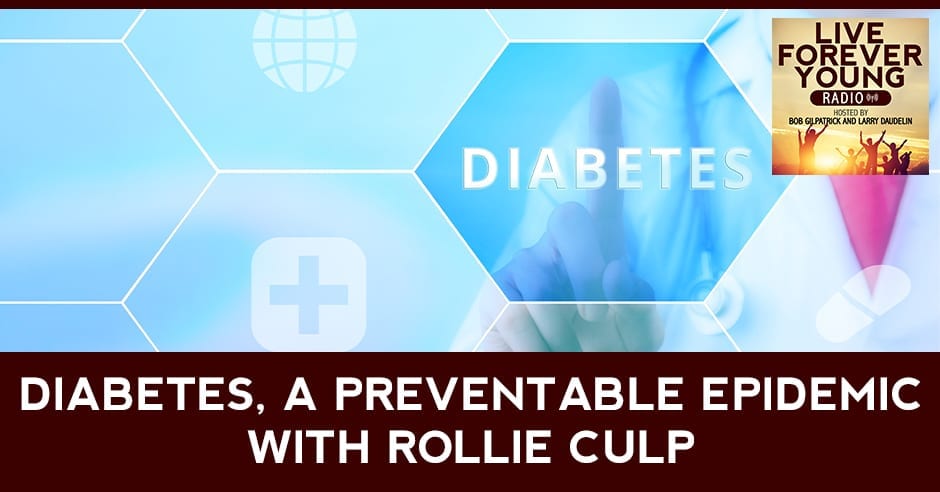
One in ten Americans has diabetes, while one in three is pre-diabetic. In today’s show, we look at some of the main reasons why the numbers relating to sugar levels in our body are not getting better but actually getting worse. Bob Gilpatrick and Rollie Culp go over the two different types of diabetes and the tests you will want to take to find out if you are at risk of developing it. They also share some great techniques which you can use to naturally regulate blood sugar and the inflammation it causes.
—
Watch the podcast here
Listen to the podcast here
Diabetes, A Preventable Epidemic With Rollie Culp
Controlling Blood Sugar And The Inflammation It Causes
One in ten Americans suffer with diabetes, while one in three are prediabetic. On this show, we look at some of the main reasons why these numbers are not getting better but getting worse. Bob and Rollie go over the two different types of diabetes and the test you will want to take to find out if you are at risk of developing it. They also share some great techniques you can use to naturally regulate blood sugar and the inflammation that causes it. Sit back, relax and get ready to live forever young.
—
I’m here with Rollie Culp. How are you doing?
I’m good, Bob. How is it going?
This is a topic, diabetes, that is something that everyone is interested to know more about because either they themselves have diabetes or prediabetes. If not, they certainly know someone who does. Almost half of the people in the country are getting to the point where their blood sugar is getting too high from insulin sensitivity and getting towards needing medical help for their diabetes. This is a big issue. The good news is that with enough information about the proper way to take care of yourself, this doesn’t have to be an issue for almost everyone that has the type of information we’re going to provide now.
You say a lot of people look for information about it. That’s very true. We have a lot of people that call in and talk about their husband or a family member that has it and how they can help them. It’s good to go over that.
It’s almost when someone calls to our office and starts talking to us, within 20 or 30 seconds, you can say to them, do you have diabetes? They’re telling you, “I’m having trouble with my eyes. My doctor told me I’m having trouble with my kidneys. I’ve got numbness in my feet.” When we asked them, “Do you have diabetes?” they nonchalantly go, “Yeah.” It’s almost like, “Doesn’t everybody?”
I know what you mean. It’s almost like a normal thing, even though they realize that it’s probably not helping.
One of the biggest issues with diabetes that we see which leads to some more good news is when people have diabetes, they tend to get very high inflammation in their body. This is what’s causing the issues that are these symptoms and medical problems that people get. If people are getting poor circulation to their extremities and peripheral neuropathy, damage to the nerves in their hands and feet, they’re also getting trouble with their eyes or kidneys or maybe even gastroparesis, which is a hard time moving the food along in your alimentary canal. It’s paralysis of your intestines.
This happens quite often later on as people who had diabetes for a while, but these things are being caused by inflammation. The inflammation is creating the damage. We’ll talk about what exactly you can do not only to lower your blood sugar but also to lower your inflammation. Even if your blood sugar won’t come all the way down to where you would want it, you can lower your inflammation all the way down. We do know people who have diabetes and have not been able to get their blood sugar down, but because of what we’ve been able to do to help them, their inflammation came all the way down and all their symptoms of being diabetic have gone away.
That extra sugar adds and creates free radicals that negatively affect your body. Share on XIt’s because inflammation is the stem of the problem. That’s where it all comes from. The inflammation, especially because they’re diabetic, that extra sugar adds and creates free radicals.
When you have extra sugar in your bloodstream, it doesn’t sit there harmlessly. It combines with proteins in your blood, which you went to a lot of trouble to make. Your body is a protein making machine. You make 100,000 different proteins and they’re used for every aspect of human life. You have to go through a lot of trouble to make those proteins from your genetic code. You have to have the enzymes, the amino acids and RNA functioning properly. You go to all this trouble and now the protein gets bumped into by sugar. It’s now no longer a good protein. It’s called glycation and now that protein no longer can function properly. In the process of that collision, it throws off a molecule of superoxide, which is a highly volatile reactive oxygen species, also known as a free radical. This is what’s causing damage to your body.
It’s like when they hit it, some sparks fly off and those sparks is what’s going to be a negative reaction inside your body that causes further inflammation and damage.
There are two different types of diabetes. You have Type 1 and Type 2.
My dad has diabetes and he has Type 1. He had a late onset Type 1. When I was being born in the hospital, he was in the hospital because he had gone into a diabetic coma right around the time I was born. He didn’t realize he was diabetic at all. One of the things he was saying was that he couldn’t get enough to drink. He would drink a ton of orange juice and he was constantly thirsty. He is always going to the bathroom before he realized it. Right around the time I was born, he had an episode and they diagnosed him with Type 1 diabetes at 30 something years old, which is not very normal.
That also happened to a relative of mine, right around the same age. I also had another relative who became Type 1 diabetic at age five years old. Sometimes it happens really young, sometimes not until later in life. In these cases, the theories are that sometimes people can get a virus that can damage cells in their pancreas or sometimes an autoimmune attack. An autoimmune attack can be caused by many different things, including stress, infection in your gut and things like that. When people get Type 1 diabetes, the cells that produce insulin in their pancreas stop producing insulin and sometimes the cells even die off. You’re not producing insulin, which has to be involved in the metabolic pathway that allows you to utilize sugar as fuel efficiently. When you can no longer do that, you’ll get very high blood sugar. It’s a life-threatening situation. You’ll have to have insulin shots or an insulin.
My whole childhood, I remember my dad always having to carry around his bike bag with his insulin in it and his tester and he’d have to prick his finger. Now they have the technology. He doesn’t have to do that. He’s got the little thing under his arm and he scans. It’s not quite as bad. He’s been able to manage it. He still works every day. He uses the products. He uses the Barley and the Resveratrol. He used to have painful hands and everything. He says the Resveratrol really helps with that.
We’ll talk about some of the modern day discoveries in the world of nutraceutical science that help people with diabetes in many different ways.
We were talking about Type 1. What happens with Type 2?
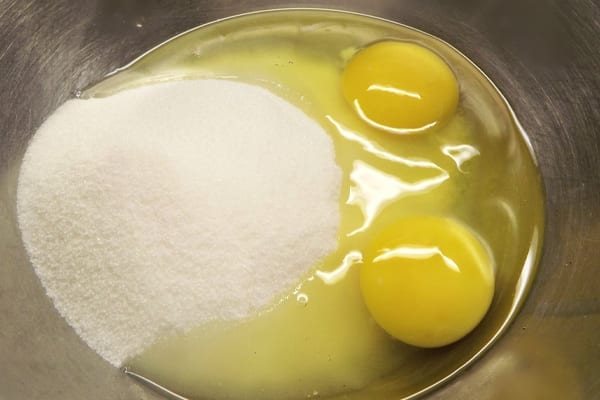
Type 2 diabetes comes along slowly as you get older and as you have certain lifestyle and things that are going to contribute to it. The main one is a poor diet. People will eat a diet that’s very high in carbohydrates and not enough good fats, protein and nutrients. For example, there’s a close correlation between low levels of vitamin D3 and diabetes. Also, another direct correlation between people eating high carbohydrate diets leads to Type 2 diabetes over time.
That’s because carbohydrates are sugar.
Essentially what happens is if you’re taking in too much sugar, you can’t utilize all of it for fuel. Some of it then gets converted into fat and another phenomenon happens where you’re secreting insulin from your pancreas, which is a hormone that helps the sugar drop down into the cells. When you have all of this sugar and you keep secreting more insulin, your cell will get resistant to that insulin because there are insulin receptors on the cell. When there’s so much insulin, you get resistant to it. This is what they call insulin resistance.
The more resistant that you get, the more fat you create from the sugar. As you get more fat, particularly belly fat, it secretes more of another hormone called leptin. Leptin is the hormone that tells you when you’re full. People will be eating dinner and at some point, they feel full. This is because the leptin that’s being secreted from your fat cells is telling your brain that it’s time to stop eating. If you start producing a lot more leptin, because you have too much fat, your brain becomes resistant to leptin and you overeat. You become overweight or obese, which is one of the main causes of diabetes. It’s this vicious cycle.
Other things that cause people to get Type 2 diabetes, which starts out as prediabetes where your blood sugar might go up to 100 or maybe 125. As it creeps up past 125, they say you have metabolic syndrome and then full-blown Type 2 diabetes. We had a person come to us many years ago who had gone to his doctor because he was having trouble with his eyesight. He went to the eye doctor and the eye doctor said, “You need to go to your internist, your general practitioner and get checked out because you might have diabetes. That might be causing their problem with your eyes.” Sure enough, that’s what it was. We began helping him with nutrition products and he got better and better as time went by. Eventually, he no longer had Type 2 diabetes.
A lot of that, the eyes particularly is because there are these micro vessels that we’ve talked about on a couple of other shows. The heart only pumps so much blood and then it has to be undulated in. These small vessels where there’s so much inflammation, it can’t get it so you then start to suffer.
The other things that people need to watch out for that cause this is also stress. We’ll talk about a couple of things you can do to manage stress and the other is an aberrant gut flora. Your microbiome in your intestines, if it gets out of whack, too much bad bacteria, not enough good. It is another correlation to getting Type 2 diabetes and also, lack of exercise. It’s another main contributor. In regard to poor nutrition, people that eat food that is processed foods from the grocery store that have preservatives and trans fats and sugar to make this food preserved and to taste good, that’s a huge contributor to the diet aspect. Even with that, if you were to get food from the grocery store, that’s whole food, that is fruits and vegetables. They’ve been grown in soil that has become so poor nutritionally that there’s almost no nutritional value in that food. Your body can be overfed and undernourished.
That’s why people, not just the leptin resistance, but they’re not getting the nutrients. When the body doesn’t get the nutrients, even though you’ve eaten something, it’s still craving what you’re not getting.
All of this bad is because people with diabetes have a much higher risk of strokes, heart attacks, dementia, including Alzheimer’s disease, problems with your eyes and kidneys, peripheral neuropathy and even cancer. For people that want to live forever young, this is a place to pay very close attention. Know what your numbers are. You want to know what your fasting blood sugar is, which is a test they do for that moment of that day. You don’t want that number to be coming up close to 100. You want to keep it below 100, in the 80 range, if possible.
For people who want to live forever young and healthy, you should know your numbers, like your fasting blood sugar. Share on XThat’s the one that my dad would test every day through his fingers.
You want to know your numbers ahead of time. Half the people that are prediabetic that are between 100 and 125 don’t know it because they’re not getting a blood test for it. There’s another blood test called A1c which gives you a longer look at your blood sugar. You should also know what that number is. You also should know what your inflammation number is. If you look and go, “My A1c was 6 and my fasting blood sugar was 120. My level of inflammation, my C-reactive protein was up to four.” Now, we definitely have a problem because that inflammation is beginning to cause damage to your body. It’s systemic, everywhere and that type of inflammation makes your coronary arteries inflamed, which leads to sticky cholesterol coating your arteries.
This is why you want to pay attention. It’s not just, “It’s not good to have high blood sugar.” It’s really bad. It’s going to lead to the leading causes of death, disability, disease if you don’t pay attention. Those were three of the tests we talked about, the A1c, CRP and you also want to make sure you get your D3 level checked since we know that it can lead to diabetes, if it’s too low. You also then want to make sure that you check your iron levels as well. High iron levels will contribute to high inflammation.
If you’ve already got inflammation issues from having blood sugar that’s high, then your iron is also high, it’s going to make it much worse. Make sure that when you go for blood work, that those things are tested. They’re not going to always be tested for at the doctor’s office. The D3, iron, CRP and A1c usually are not, unless they suspect that you have diabetes. They’ll check your fasting blood sugar and if it’s 100 or more, the next time they might check your A1c. You need to know those other numbers.
Those are good to just know, in general, for your health.
There are other things that can create high inflammation, chronic infections and toxins. It’s good to know what that is. What is it that we can do? What is it that we did for your dad to help him with his inflammation? There are a couple of things. One was sprouted barley seeds. Sprouted barley seeds that are stabilized, where the nutrients are stabilized right at the time that the sprouts have been stopped from their sprouting process, is going to contain high levels of a few things. One is SOD or superoxide dismutase, which is the holy grail of anti-inflammatory agents and the holy grail of anti-aging. Because the higher your inflammation, the faster you’re going to age.
SOD is like a Pac-Man molecule. It’s watching for these free radicals that are causing the damage and is neutralizing it. The other thing that is good about these sprouted seeds is they also help with restoration and recovery. You have to have an adequate amount of amino acids and an adequate amount of metabolic enzymes in order for your body to constantly renew itself. There’s abundant amount in the sprouted seeds. The other thing is, a lot of times, people with diabetes are that way because they’re malnourished. As people age, their ability to absorb nutrients diminishes. Your small intestine, where most of the absorption occurs, have these little hairs called villi. As you age, they start to get coated over by a plaque.
The villi are like the fingers that pull the nutrients that you use on what you eat.
If they get coated over, you’re going to have a hard time absorbing nutrients and that itself can lead to diabetes. You want to be sure that you are taking in through the sprouted barley seeds, the compounds that will dissolve that plaque moving out of your body and revivitize the villi. This is what occurs when people do this. Whatever they eat, whether it’s nutritional supplements or food, they’ll be able to absorb the nutrients.
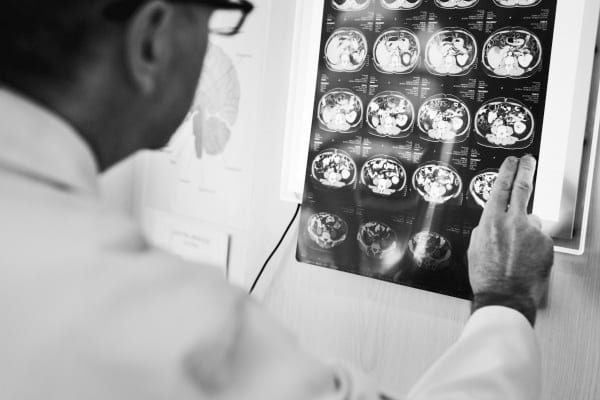
Also, medication too.
Your medications that you might need for whatever will be absorbed much more easily. The other thing that we help people with is to make sure that your vitamin D level is extremely important. There are also other antioxidants. Things like vitamin A, C and E, they call them the ACE, vitamins and minerals like selenium and zinc. Also, special compounds like glutathione and trimethylglycine, proanthocyanidins all scavenge, particular free radicals or help to recharge the other free radical scavengers. It’s a chain reaction so they all work together to keep your inflammation down. When we worked with your dad by getting his inflammation down, that even though his A1c still stayed high, all of the negative effects of his diabetes began to go away, including his gastroparesis and the pain and numbness in his hands.
His legs would shake a lot more. They’ve reduced a lot now, but he says that and the hands because he still works with his hands. He still does a lot of work. He’s out there screwing stuff to the wall, putting drywall up still because he wants to stay active. He said one of the main things that helped was with his hands. That’s always good. You’re using that for trade and if you can get them to feel better, then that only makes the day better.
The other thing of course, is exercise. A lot of people as they begin to get overweight and diabetes, their energy level goes down. They don’t feel like exercising. This is another good thing about having proper nutrition as your energy level goes up. If people use our sprouted barley seeds and our Boomer Boost product, which gives people a lot more energy, now they’re going to feel like exercising. As you exercise more, your insulin resistance comes down. You’ll begin to burn fat and your leptin resistance will come down. It makes your life a lot easier. You’re not fighting this hormonal battle constantly day after day.
It’s good to know that with some exercise and activity, you can help try to reverse the resistance to these different things.
The other thing is foods in general, you have to be very careful not to eat too much sugar. There’s a lot of hidden sugars in different things that you wouldn’t know. There is a great book called the Sugar Impact Diet. JJ Virgin wrote the Sugar Impact Diet and she gives you an outline of where the hidden sugars are and what foods you can eat instead to help to control your blood sugar.
One question we get a lot is about how to control the cravings. A lot of people have these cravings for sugar and avoiding the sugar in the first place, but how do you get over that hump of not grabbing a soda or a chocolate bar or whatever because of the sugar that you’re craving? It’s like quitting smoking.
There are a couple of quick tips, but there is another great book that is called Bright Line Eating. It is a book all about that. Sugar cravings are difficult to get over. Let’s put that out there right away. When you look at a brain scan of someone who’s addicted to sugar, their brain looks worse than someone who’s addicted to heroin or cocaine. It’s a bad addiction. We’ll do a whole show about overcoming addictions. In general, people need to realize that these cravings are very real. It’s not that they’re somehow weak or incapable. What you can begin to do is some of these substitutions.
Let’s think someone is coming home from work. They open up the door to their house or apartment. The first thing they do is go to the refrigerator, they open up the refrigerator to get a little something to eat or to get something to drink. They grab for some soda pop. Twenty-five percent of all the calories in the United States is consumed by drinking soda pop or another type of sugary drink. You’re going to have a snack that’s some crackers or a cookie or something like that. People that get addicted to sugar, this is what they do. They’re unconsciously just going straight at it. What you need to do is practice food habit management. This is where the tiny habits come in.
Sugar addiction is bad enough on its own, but habits that have been developed around that make it doubly worse. Share on XWe’re talking about this on every show. It’s very good.
The tiny habit is very simple. It’s ABC. A is an action that is happening for you. They’ve referred to it in the book as an anchoring but it’s an action that you are taking. In this case, I’m opening up the refrigerator door. The B is a behavior that you want to install that’s better for you than the old behavior. The C is a celebration. In this case, you have to do this once. You have to start and you have to make a positive intention with a solemn commitment and you’re going to say, “What I’m going to drink is not this sugary drink, but instead I’m going to drink water and see if it satisfies my thirst.” You might want to put lemon in the water so it has some flavor. “That’s what I’m going to do. I am not going to eat any food because the fact of the matter is, I’m not hungry. I’m going to drink some lemon water and I’m going to bag the crackers, cookies and soda pop.”
These are the types of habits that people get into who have an addiction to sugar. Instead, you’re going to drink your lemon water and then you’re going to celebrate. What we celebrate, we tend to do more. This is Behavioral Psychology 101, do a new action, celebrate and you’re more likely to do it again. Your celebration can be something as simple as, “I did it. I’m doing great.” This is a simple way to get started breaking your sugar habit because as you drink that water instead of sugar, you now all of a sudden are in a state physiologically where you haven’t increased your blood sugar. You haven’t reinforced the addiction in your brain that you have to do this. The books on Atomic Habits, Tiny Habits, Bright Line Eating, including the Sugar Impact Diet, all of that information is something that people will want to have if they have addiction to sugar.
Also, in regard to this habit management, you can use tapping. Sugar addictions are very strong. You have to have a pattern interrupt. One of the things to remember is that sugar addiction is bad enough on its own. Habits that have been developed around that make it doubly worse, but the habits can be changed. As you change the habits, your sugar addiction will begin to come down. A great pattern interrupt is to use the emotional freedom technique. In the case of going to the refrigerator, let’s say you have this intention with your new tiny habit routine that you’re going to drink some lemon water, but you just can’t do it and you really have to have that soda pop. This is a time when you can stop and tap.
When you tap on the tips of your fingers on the side of the nail about five times, starting with your thumb and moving to your other fingers, you can literally stand in front of the refrigerator and tap on your fingertips and on your karate chop point. You can repeat a phrase that would say something like this, “Even though up until now I fought that I had to continue to have this habit of eating things that are bad for me, every time I come home, I completely love and accept myself anyway. I’m so grateful now that I realize I’ve begun to break this habit. I’m reaching for the lemon water instead and I’m feeling completely peaceful about the whole thing.”
Standing in front of the refrigerator, cross your hands and your heart and breathe in. Drop your chin down to your chest, drop your hands down and breathe out. Now, you’ve just anchored a peaceful feeling to your stated affirmation that you’re feeling peaceful about drinking lemon water. You can do this as many times as you want, as many times as it takes, combine it with your ABC, celebrate your new behavior and you’re on your way. The other things that you can see in the book with JJ Virgin is how to substitute foods that might have trans fats.
That’s really important too, because if you don’t know what to substitute something, it’s not going to be long before you start eating it again. You’ve got to figure out what to use to get out of that habit as well. That’s important.
You can make a transformation in your life. This can work for children all the way up to people that are 100 years old. This information about tapping, tiny habits, and knowledge about food and insulin resistance, knowing your numbers of your inflammation, your sugar, your D3, your iron. These are the tools that you use. You’re going through a transition from this lifestyle and habits and information to the other side of the bridge, where the new you is already there as a possibility in the field of pure potentiality. To go over that bridge, imagine that this bridge is like climbing a mountain. In order to climb a mountain, you have to have certain tools. You have to have a rope, an axe and hiking boots. These are your tools.
Tapping and tiny habits are your climbing gear. This is going to get you to the other side of this steep bridge that you’re going to climb. The last thing is the issue of sleep. Poor sleep also can lead to insulin resistance and poor sleep is correlated with people with diabetes. We can do a whole show on the issue of sleep. In general, you need to know people sleep in hour and a half cycles. Your melatonin rises and falls every 1.5 hours. You want to try to sleep complete cycles.
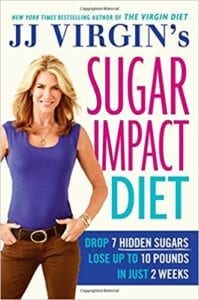
If you were to sleep for two cycles, you slept for three hours. If you sleep for four cycles, you’ve slept for six hours. If you sleep for five cycles, you’ve slept for 7.5 hours. What you don’t want to do is set your alarm and go to sleep at 11:00 and set your alarm for 6:00 because you’re not in the 1.5 hours cycle if you do something like that. You would want to set your alarm for 6:30 knowing you’re going to be asleep at 11:00. If it takes you fifteen minutes to fall asleep when you get to bed, you get to bed at 10:45, you set your alarm for 6:30. If you’re not going to get up at 6:30 you want to add 1.5 hours. You set your alarm for 8:00 and you’re going to sleep for nine hours.
They say, “Everybody needs to sleep for eight hours.” Actually, not. Eight hours is going to probably wake you up in the middle of a sleep cycle and you’re going to feel groggy for a good part of the day. You want to try to sleep in this hour and a half cycles and you want to do it for a minimum of 7.5 hours. A big issue that people always talk to us about when they call in, “I don’t have any trouble falling asleep, but when I wake up at 3:00 in the morning, I can’t get back to sleep.” Number one, if you use our Good Night Formula that Boomers Forever Young has, quite often, people will sleep through the night. If not, our favorite trick is relaxing your tongue.
It sounds funny but it works. I’ll give you how I do it. I pretend like you’re making a muscle like this, but you do it with your tongue and then let it relax. I’ll let Bob explain why that works, but that’s what you do. You tighten your tongue up and then let it relax.
Your tongue is connected to your speech center in your brain, the Broca’s area. When you’re thinking, your tongue is tense and maybe even moving, even if you’re only thinking to yourself and not talking out loud. When Broca’s area is lit up and active, your brainwaves primarily are beta waves, which are your waves of being awake. You want your beta waves to be small and you want your delta waves to be bigger, which is your sleep wave. By relaxing your tongue, Broca’s area calms down, your beta waves narrow and you can fall back asleep. It’s very hard to stay awake when you’re relaxing your tongue. It’s like trying to keep your eyes open when you sneeze. The other things that people can use for getting back to sleep is manual lymph drainage. Begin to do lymph massage on your neck and your face and you can follow along on our YouTube channel.
We have a video of lymph drainage on Boomers Forever Young YouTube. Check that out.
This also will make you feel sleepy and it also helps with the detoxification that you are going to be going through as you sleep. I think that’s pretty much it. Those are the main things we wanted to get across in this.
These are some good information people might not have realized, the idea of how detrimental not sleeping is for insulin resistance. That’s important. I enjoyed it. One of the things that I can relate to, like I said with my dad, is living through what a Type 1 diabetic has to go through. I’m glad that the things that we’ve been able to help him with has helped to make his life that much better. I appreciate you going over this for everybody else out there.
Thank you, Rollie.
Thank you, Bob.
Thanks, everybody, for reading. We will see you on the next episode.




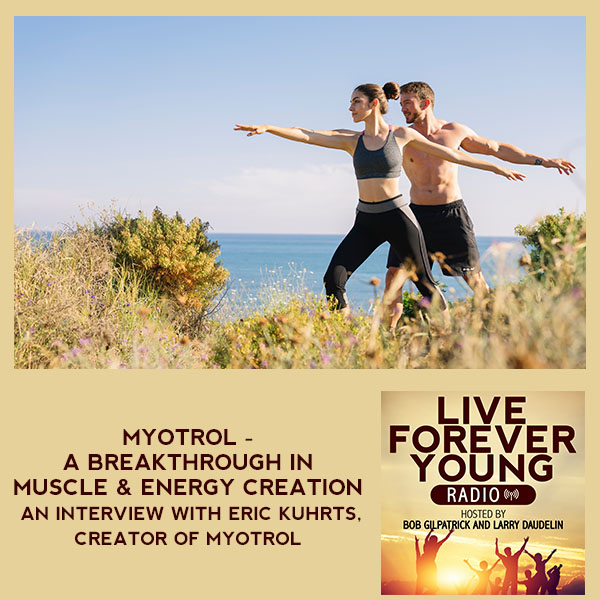


Duane Habeck
March 31, 2021 9:21 pmBob must have been a teacher. Not only is he great on the Bruce shows, he is great in these videos.